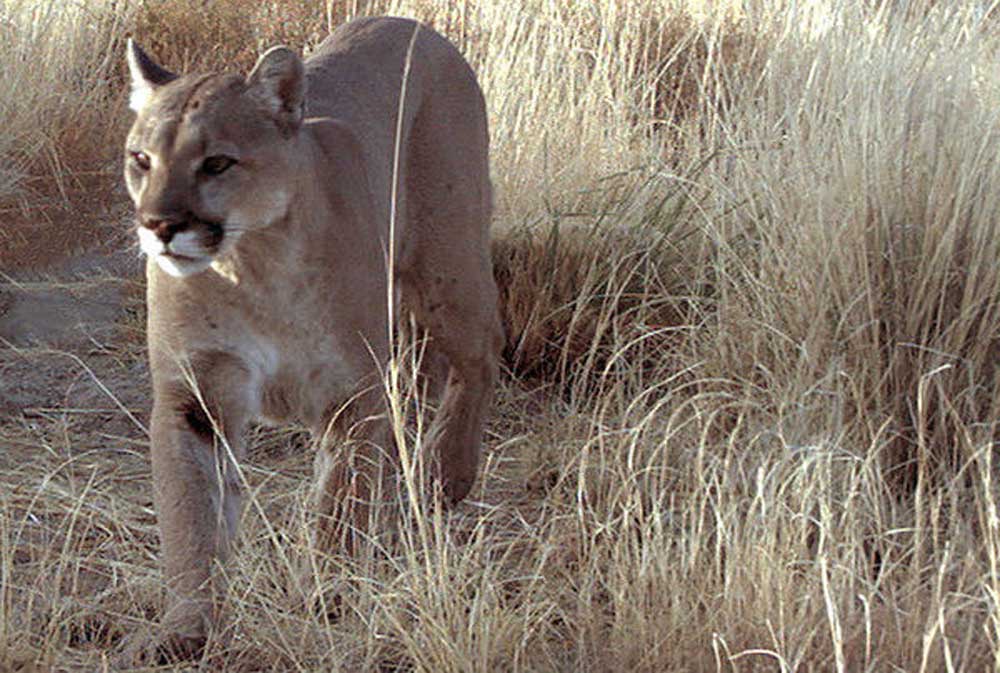Texas mountain lions more common west and south, but can travel anywhere
Published 7:01 pm Saturday, May 28, 2016

- USFWS/COURTESY MOUNTAIN LIONS are not commonly found in any part of Texas, but the largest populations are in West and South Texas. Biologists believe those that wander into East Texas are usually young males.
STEVE KNIGHT/texasalloutdoors.com
Want to start a street brawl? You don’t have to mention the names Hillary, Bernie or the Donald.
Nope the true magic words to start an old-fashioned donnybrook at least in Texas would be mountain lion, or maybe cougar or panther. They are interchangeable.
Cougars have never really been that numerous in Texas because of the nature of the beast. There is plenty of food in almost every region, but the cats are solitary animals. And while the proliferation of game cameras put more eyes in the field year around, the truth is Texas’ mountain lion population is at best stable.
“Anecdotal reports suggest that the South Texas population may be declining while the West Texas population may be stable or expanding,” said Jonah Evans, Texas Parks and Wildlife Department’s mammalogist.
However, Evans noted that since mountain lions are not a game species, the department does not collect data on them so his answer is not definitive.
On the other hand, the department does respond to reported sightings, which gives biologists some idea of where mountain lions do exist.
“We get from 20 to 80 reports a year. Usually only a hand full are able to be confirmed. Many of the reports are clearly misidentifications,” Evans said.
Fake social media posts also muddy the waters when it comes to how many of the cats are really being seen and where.
The most likely place to find mountains lions in Texas is going to be the Trans Pecos region where food sources are plentiful and a human population is not.
“West Texas is the primary place where mountain lions are regularly found. There is a known population in South Texas, but there is evidence that it may be declining. There are occasional lions in North and Central Texas and extremely rare confirmations in East Texas,” Evans noted.
The biologist explained that while there most definitely can be a mountain lion spotted in East Texas, they are going to be few and far between.
“They are extremely rare in East Texas. Many of the reports of ‘black panthers’ are from East Texas as well, yet there has never been a proven black mountain lion. We do not have density estimates for mountain lions in Texas, but, I do not believe that there is any sort of stable population in East Texas. Any confirmed mountain lions there are almost certainly are dispersing juvenile males,” Evans explained.
Sul Ross State University’s Borderlands Research Institute has been studying mountains primarily in the Trans Pecos region for several years.
By attaching radio transmitting collars with GPS technology to captured cats they have learned that adult females have a home range that averages more than 30,000 acres.
In contrast an adult male’s home range is about 130,000 acres, or more than 200 square miles.
The research shows that while adult mountain lions have a large home range, they tend to stay within a specific area while traveling large distances daily.
Unlike many other types of wildlife, mountain lions do not have a specific breeding season.
“It varies considerably. Young can be born at any time of year, though it’s more common in the warmer months. Young remain with their mother for 12 to 18 months before dispersal,” Evans said.
In what may explain Evans comment about the cougars that find their way into East Texas are typically juveniles, studies have shown that young cats kicked out of the pride can travel upwards of 600 miles.
Those same male juveniles will be on the move again when they mature and are in search of a breeding female.
Although a mountain lion is capable of bring down prey animals much larger than itself, based on BRI’s ongoing research in Far West Texas, almost 50 percent of a cougars diet is deer, either white-tailed or mule deer. Another 25 percent is feral pig or javelina. They are also opportunistic feeders, taking rabbits and other small animals when possible.
Have a comment or opinion on this story? Contact outdoor writer Steve Knight by email at outdoor@tylerpaper.com. Follow Steve Knight on Facebook at Texas All Outdoors and on Twitter @txalloutdoors






